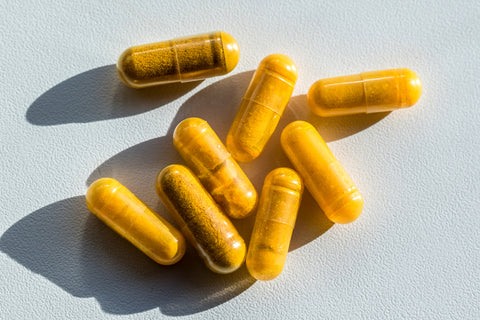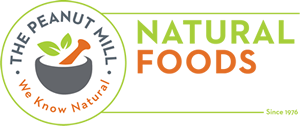by Dr. Kate Rheaume via Natural Factors
Native to Southeast Asia, turmeric has been used for health, culinary, and ceremonial purposes for almost 4,000 years – and it has at least 53 different names in Sanskrit. [1] Its scientific name is Curcuma longa.
This flowering plant is a member of the ginger family and possesses a root-like stem that produces a brilliant golden yellow spice. Since ancient times, its bright colour and widespread use as both a fabric dye and cooking spice earned it the nickname “Indian saffron,” although the plant is unrelated to true saffron. Today, the popularity of turmeric has reached celebrity status, with widespread rumours and misinformation to match. Here’s what you need to know about turmeric, and its key active constituent, curcumin, to really benefit from this ancient and ever-popular botanical.
Curcumin Research Revealed
With such a long history of use, it’s not surprising that turmeric has been the subject of thousands of scientific papers. More than 100 components have been isolated from turmeric, the most attention grabbing of which is curcumin. The technical and far less catchy name for curcumin is diferuloylmethane. The health benefits that people seek from turmeric really come from this compound, which is well established as an effective antioxidant and for its unparalleled ability to promote a healthy inflammatory response.
When it comes to promoting a healthy inflammatory response, curcumin is no one-trick pony. Once absorbed, curcumin works on multiple pathways, including transcription factors, cytokines, protein kinases, adhesion molecules, and enzymes. It helps stabilize the imbalance between anti-inflammatory and inflammatory signalling. In turn, this aids in mitigating the inflammatory cascade of biological compounds responsible for swelling and stiffness. As for oxidative stress, curcumin defends against both fat- and water-soluble free radicals.[2] Since inflammation and free radicals play a role in most health conditions, curcumin is a shining star of well-being and health resilience.
Curcumin Myths Debunked
There is usually some erroneous hearsay around anything highly sought after; curcumin is no exception. One of the most prevalent curcumin myths is that you can reap the benefits of curcumin by just sprinkling a little on your food, enjoying a turmeric latté, or eating the occasional curry dish. The truth is, in its natural state, curcumin is a large, irregular molecule that is simply not readily absorbed in the human digestive tract. In other words, it naturally has low bioavailability. In studies, 10–12 g of curcumin were administered by mouth, and participants showed little change in blood levels. [3] The full benefits of curcumin are only realized through absorption enhancement, and how best to do this is the most rampant curcumin misinformation of all.
The single biggest myth about curcumin is that it requires black pepper for best absorption. Everyone has heard this; it is the subject of memes and even a few stand-up comedy routines. This particular misinformation is based on a 1998 study in which researchers tried to overcome curcumin’s notoriously low absorption. As expected, study participants given standard curcumin had basically undetectable blood levels of curcumin. Participants given curcumin and black pepper extract (piperine) achieved blood levels that were just barely detectable, and this was deemed a significant increase in absorption over standard curcumin! [4] However, the absolute value of the blood levels in the curcumin and black pepper group was nothing to celebrate, yet the advice has unfortunately stuck.

Curcumin Absorption at Last
If black pepper and lattés don’t work, then what does? Poor absorption is the main reason for lacklustre clinical studies using regular curcumin, even when given in substantial doses. Curcumin absorption can be bolstered using a few methods, but they are not all equal. There is one enhanced–absorption form of curcumin that has been used in the greatest number of successful published and ongoing clinical studies, called Theracurmin®, the form of curcumin found in CurcuminRich.
Theracurmin is “an advanced formulation that uses proprietary dispersion technology to create microscopic particles dispersed in a colloidal suspension for better absorption.” What does that mean in plain language? Simply put, standard curcumin is ground into extremely fine particles, then blended with a vegetable gum (gum ghatti) to prevent the tiny particles from clumping back together. This process dramatically increases curcumin solubility and bioavailability.
Theracurmin is vastly more bioavailable than regular curcumin powder, ensuring an effective level in the blood. Published studies comparing blood levels of curcumin using leading brands confirm that Theracurmin is the best–absorbed form of curcumin‡ on the market. Scientific scrutiny confirms that Theracurmin is more bioavailable on a milligram-to-milligram basis than other leading enhanced and regular forms of curcumin.‡ Published clinical trials using Theracurmin have shown that it promotes health in joints, skin, liver, brain, and even oral health.
Curcumin Clarity for All
By now, you may be thinking, “but turmeric has been used for thousands of years; why do we need modern technology to benefit from it?” That’s a logical question. Indeed, the health of populations who consume turmeric regularly pointed toward its beneficial effects. The benefits seen in modern clinical trials using advanced-absorption curcumin extend far beyond what was seen in population-based, observational studies of people who eat turmeric. So enjoy curry regularly. But if you want to experience the full benefits of curcumin, reach for Theracurmin.
When it comes to curcumin, it’s not how much you take, but how much you absorb that matters. It can be difficult or impossible to judge how much of it will be absorbed from the amount of curcumin on a supplement label. CurcuminRich Theracurmin takes the guesswork out of curcumin for health maintenance, ensuring you get the expected upsides of this ancient spice.
You can go back to drinking regular lattés now. You’re welcome.
‡Scientific scrutiny revealed that Theracurmin was more bioavailable on a milligram-to-milligram basis than other leading* enhanced and regular forms of curcumin.
*As measured by SPINS 2014 data.
This post originally appeared on the Natural Factors blog on March 24, 2022. You can read the original post here.
If you’re interested in trying CurcuminRich Theracurmin, you can shop the products on our online store!

2. Ghosh S, Banerjee S, Sil PC. Food Chem Toxicol. 2015; 83:111-24.
3. Lao CD, Ruffin 4th MT, Normolle D, et al. BMC Complement Altern Med. 2006; 6:10.
4. Shoba G, Joy D, Joseph T, et al. Planta Med. 1998; 64(4):353-6.

